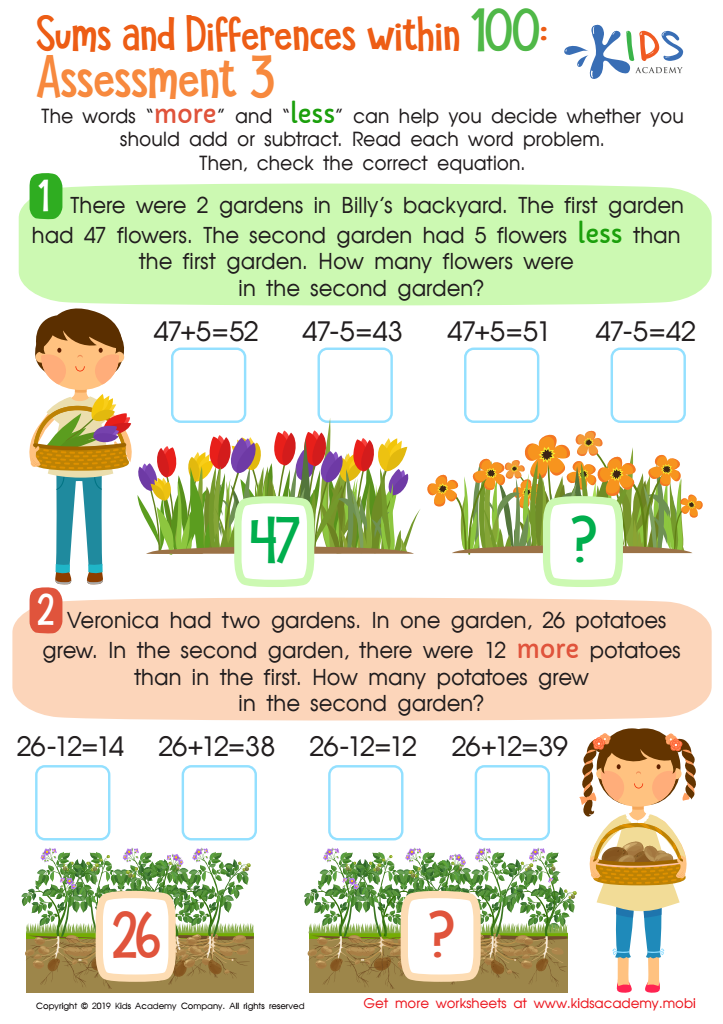Understanding of numbers Worksheets for Kids
1 filtered results
-
From - To


Sums and Differences Within 1 - Assessment 3 Worksheet
Question/Answer
Why is the Understanding of numbers skill important for Grade 2 students?
Understanding numbers is crucial for Grade 2 students because it lays the foundational skills needed for all future math concepts. It helps them grasp basic arithmetic operations, recognize patterns, compare quantities, and solve problems. This essential numerical literacy supports their ability to think logically and critically, essential for academic success and everyday life decision-making.
How to test a Grade 2 student’s Understanding of numbers skills?
To test a Grade 2 student's understanding of numbers, use a variety of questions and activities such as asking them to count forwards and backwards, recognize and write numbers up to at least 100, solve simple addition and subtraction problems, identify place values (ones, tens, hundreds), and demonstrate an understanding of basic concepts of more than, less than, and equal to.#$%
What are some effective activities to train students’ Understanding of numbers skill when teaching them about Addition & Subtraction?
Effective activities include using manipulatives like counters, number blocks, or beads for tangible practice, playing number line games to visualize addition and subtraction processes, incorporating math puzzles and word problems to apply concepts in varied contexts, and engaging in interactive online math games that adapt to individual learning speeds while making learning fun and engaging.
 Assign to the classroom
Assign to the classroom











